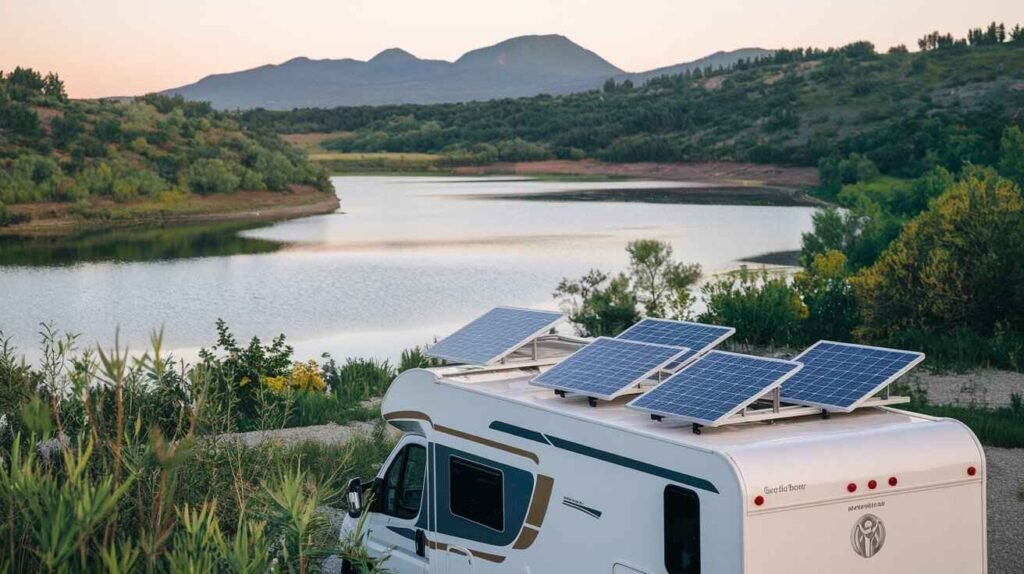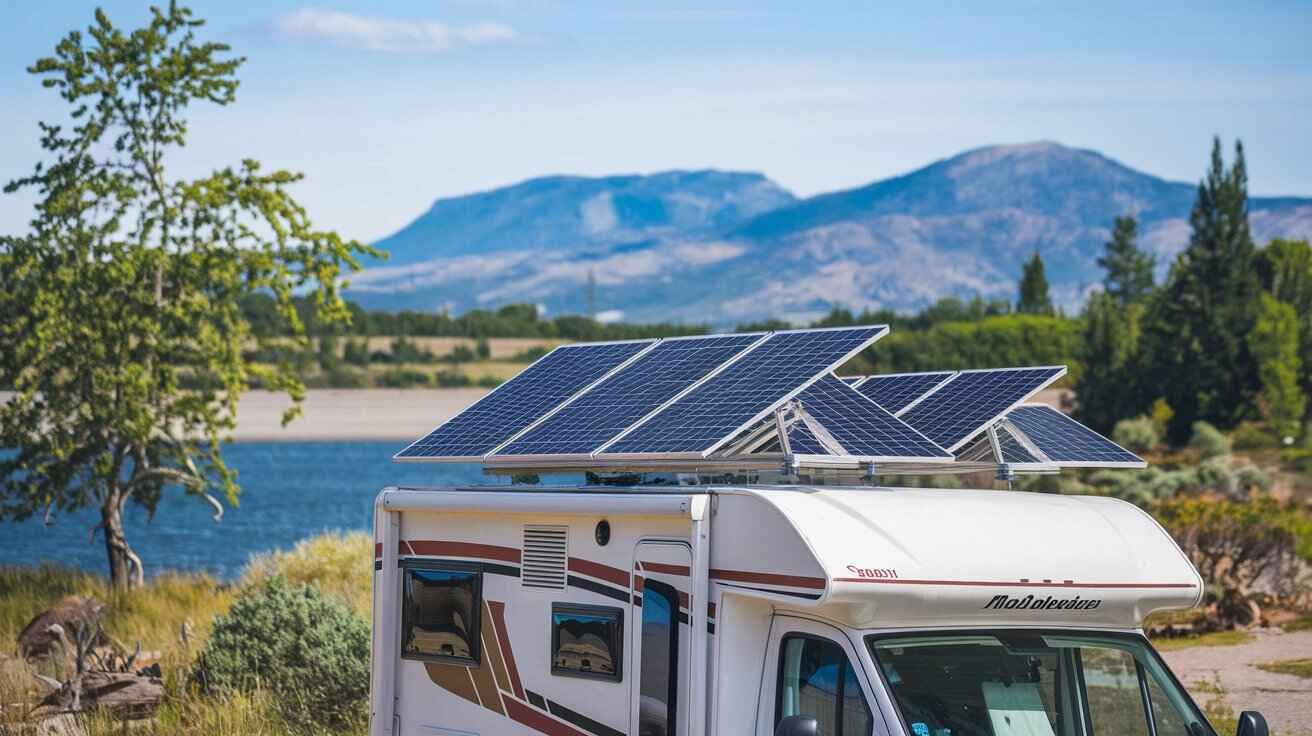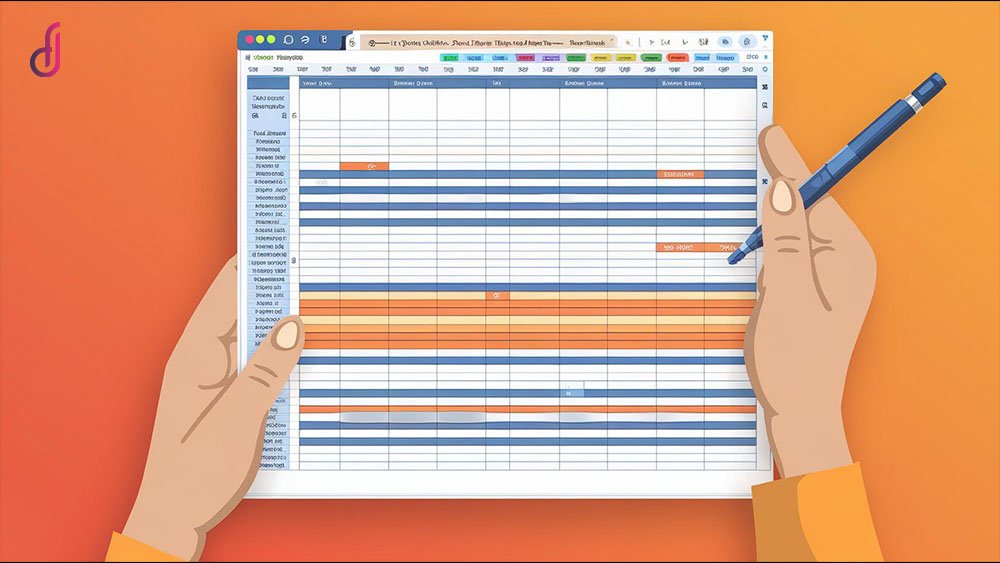Introduction
A motorhome with solar panels offers the perfect blend of adventure and sustainability, allowing travelers to power their journey off-grid. Solar panels accumulate daylight and convert it into strength, which powers critical gadgets and home equipment on the street. This setup reduces reliance on campground electricity and generators, giving travelers extra independence. With solar energy, you may explore far-flung locations without annoying approximate energy assets. Overall, a motorhome with sun panels is outstanding funding for eco-aware vacationers in search of freedom and flexibility.
What Are Motorhomes with Solar Panels?
Motorhomes with sun panels are leisure vehicles (RVs) ready with solar strength systems. Solar panels on a motorhome perform similarly to residential ones, although on a smaller scale. These panels accumulate sunlight, convert it into power, and store it in batteries, powering home equipment, shops, and other essentials on the street. For adventurous travelers who spend nights in faraway locations, solar panels are specifically useful, as they provide independence from the grid.
Motorhomes normally offer a napping area for two to eight humans, a kitchenette, a small toilet, and a living location that could consist of a dining table and rotating seats. Solar panels enhance this cell’s domestic enjoyment, allowing you to tour without reliance on fuel-based total mills or campground strength resources.
Why Consider Solar Panels for Your Motorhome?
Installing solar panels in your motorhome is ideal if you love sustainable tours. Solar strength offers energy independence, reduces reliance on fossil fuels, and saves on campground expenses and generator prices. Full-time travelers, mainly, locate solar energy crucial to run lights, charge devices, and maintain essentials powered at the same time as on the street.
How Motorhome Solar Panels Work
Motorhome sun panels convert daylight into direct modern-day (DC) power, which is saved in onboard batteries, such as the 12V leisure battery. This permits you to shop for sun electricity to be used at night or at some point in cloudy weather. Appliances, lighting fixtures, enthusiasts, and even electric awnings in your motorhome can be powered directly by DC energy.
For gadgets that use alternating cutting-edge (AC) – like microwaves, coffee makers, or hair dryers – an inverter is used to transform DC into AC. This permits you to apply sun energy for both low-electricity and high-energy appliances to your motorhome.
Types of Motorhome Solar Panel Systems
Portable Solar Panel Systems
Portable systems are easy to install and plug immediately into a devoted sun plug in your motorhome. They consist of 100-watt sun panels that may be secured with Velcro straps or even are available in suitcase form. Portable solar panels just like the Sungold HP Series (100W–400W) are popular for individuals who may additionally want transient sun power or emergency backup, providing flexibility and a particularly low price of access.
Permanent Solar Panel Systems
A permanent motorhome solar device is more efficient and value-effective per watt. By maximizing unused roof area, those panels can continuously acquire daylight even while using. The Sungold flexible solar panels and inflexible panels are perfect for everlasting installations and may support electricity-extensive appliances like refrigerators, microwaves, and air conditioners. Permanent systems are regularly hooked up by professionals to ensure premier performance and longevity.
Choosing the Right Solar Panel Kit Size
Choosing the right package depends upon your electricity needs. The most famous kit is the 120W MPPT, balancing power, charge, and length. This setup is dependable 12 months round, while an 80W kit is ok for simple summertime wishes. Assessing the dimensions and electricity necessities of your motorhome will help you determine the fine sun set up.

Advantages of Solar-Powered Motorhomes
- Environmental Benefits
- Solar electricity is smooth and decreases carbon footprint, making your travels extra eco-friendly.
- Cost Savings
- While the initial setup expenses can be high, the usage of sun power gets rid of or reduces campground charges and fuel fees.
- Energy Independence
- Solar panels allow you to camp everywhere, with the power of energy on-demand and stale-grid freedom.
Limitations of Using Solar Panels in Motorhomes
Solar panels have boundaries, along with decreased performance on cloudy days and in shaded parking regions. This means that a backup power source might be necessary for lengthy stretches of inclement weather.
Steps to Install Solar Panels on a Motorhome
- Select the Right Panels based on your needs and roof area.
- Install the Charge Controller to adjust power and go with the flow of your battery.
- Set Up the Battery Bank to keep the generated power.
- Mount the Inverter to convert DC to AC energy.
- Connect and Secure the Wiring between the components.
It’s recommended to work with a technician to set up in case you’re unfamiliar with electric systems.
Important Components in a Solar Setup
- Inverters
- The inverter converts DC power into AC, enabling the use of household home equipment.
- Battery Bank
- A battery bank shops the converted energy, making it available at night or during overcast days.
- Charge Controllers
- A rate controller prevents overcharging, safeguarding the batteries.
Estimating Power Needs for Your Motorhome
Estimating electricity desires for your motorhome is an essential step to ensure you’ve got sufficient power for your journey. To start, list all the appliances and devices you plan to use, like lighting fixtures, refrigerators, microwaves, TVs, and contact chargers. Next to every item, notice the wattage (strength usage) so that you know how an awful lot of electricity each one makes use of.
Once you’ve got this list, think about how many hours you’ll use each piece of equipment each day. For example, if a 60-watt mild is on for 5 hours, it makes use of 300-watt-hours (60 watts x five hours). Do this for each appliance, then upload them up to get your general daily strength utilization in watt-hours.
Knowing this allows you to select the proper battery and solar panel setup. If you operate quite a little energy, you could need a larger battery or extra solar panels to hold the whole thing jogging. As well-known, the goal is to have a chunk greater electricity than you observed you may want. This gives you more power for cloudy days or surprising strength wishes, ensuring your motorhome remains powered up anywhere you go.
Best Practices for Solar Panel Maintenance
- Clean Panels Regularly to maximize sunlight absorption.
- Inspect Connections for put-on and corrosion.
- Avoid Shaded Parking to maintain panels productive.
Cost of Installing Solar Panels in a Motorhome
The value of a sun panel setup varies based on the variety of panels, device potential, and complexity of installation. An easy 200-watt setup may cost a little around $1,000, whilst large structures with everlasting installation can exceed $five,000. However, the benefits can offset those initial expenses through the years.
Popular Motorhomes with Built-In Solar Panels
Popular motorhome manufacturers like Winnebago and Airstream now provide models with built-in solar structures, making it less complicated for eco-conscious tourists to hit the street sustainably. These motorhomes come with pre-installed solar panels which can be specially designed to keep your battery charged, even whilst you’re a long way from power assets. With an integrated solar system, you don’t have to fear putting in panels yourself, and the setup is optimized for efficient electricity generation.
For instance, Winnebago’s Solis and Airstream’s Interstate collection feature sun-strength options that allow you to run important home equipment and price gadgets without needing a generator. These systems are mainly beneficial for individuals who need to camp in faraway areas and live off-grid longer. Built-in solar also adds resale price to your motorhome, making it wise funding for the future.
Maximizing Solar Efficiency While Traveling
- Park in Direct Sunlight when possible for maximum performance.
- Angle Panels Correctly if they’re adjustable.
- Use Energy-Efficient Appliances to conserve strength and extend battery life.
Conclusion: Is Solar Power Right for Your Motorhome?
Solar panels offer a handy, sustainable way to energy your motorhome. With the proper setup, you can tour greater freely, cut charges, and reduce your environmental impact. While there are advance prices, the benefits of sun electricity make it exquisite funding for the eco-conscious visitor.
FAQs
Can I run the air con on sun energy in my motorhome?
Running AC in simple terms on solar is hard due to excessive power needs, even though an effective device with a massive battery bank can assist quick-time period use.
How many solar panels do I need for my motorhome?
This depends on your energy desires and roof area. A 200W system is sufficient for fundamental needs, however large setups might also require 400-800W or greater.
Are sun panels realistic in winter?
Yes, however shorter days and less sunlight may also require a backup power source.
Do bendy solar panels paintings in addition to conventional ones?
Flexible panels are handy and lightweight, however normally less green than rigid monocrystalline panels. They’re suitable for small strength wishes.
Can I add solar panels to an existing motorhome setup?
Yes, solar panels can be delivered to maximum motorhomes, and it’s recommended to consult a technician for secure integration along with your existing gadget.
Also Read:Ceiling Fan with Light: Enhance Your Home with Stylish & Space-Saving Illumination








One Response